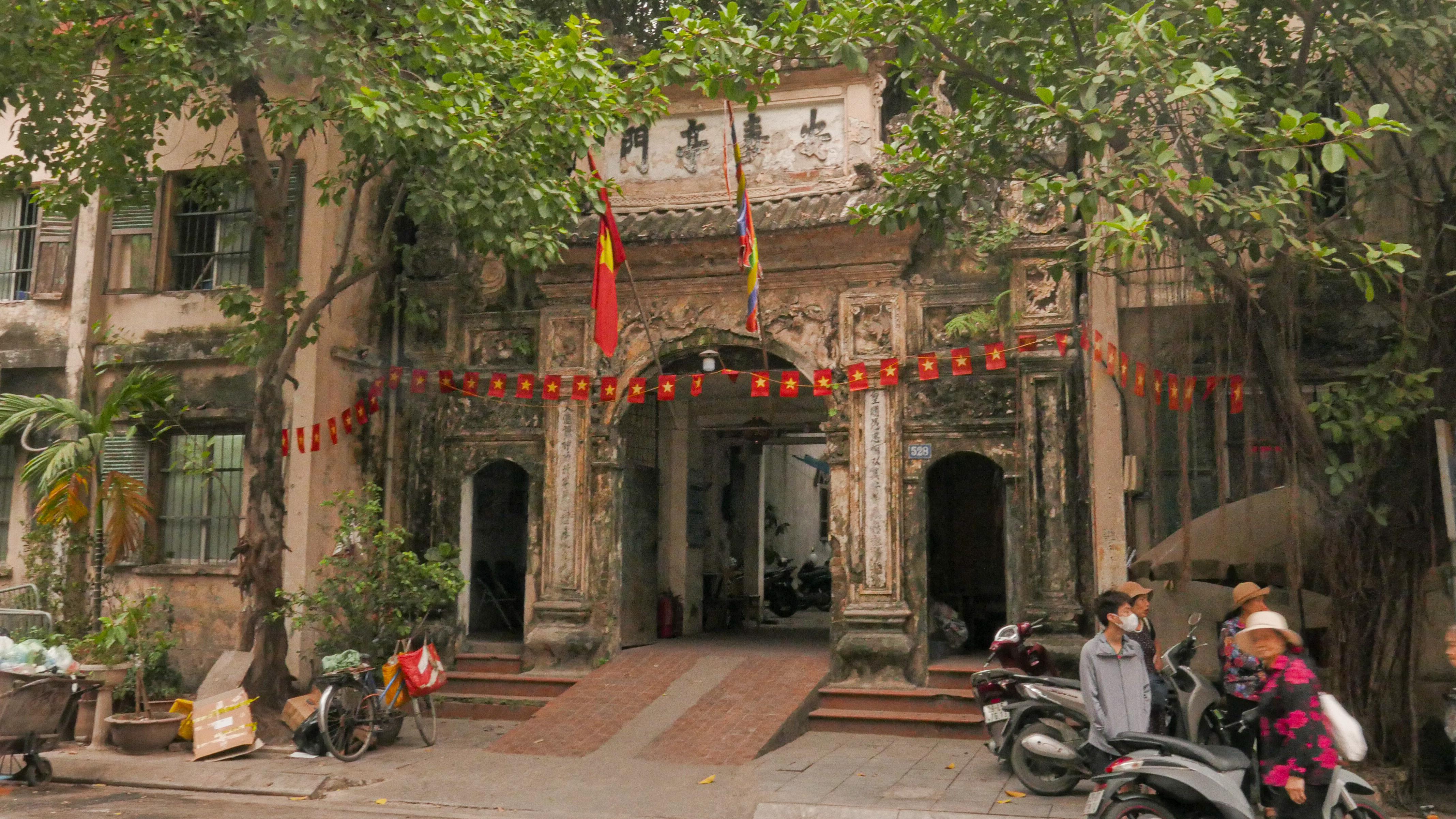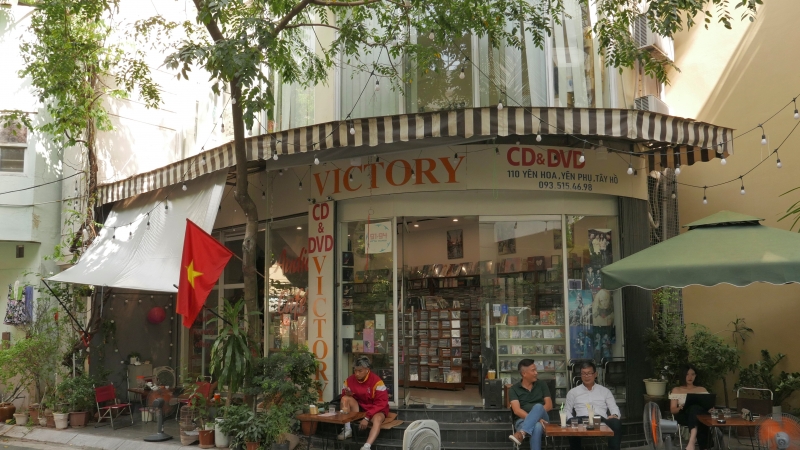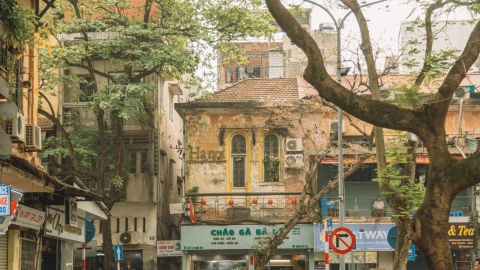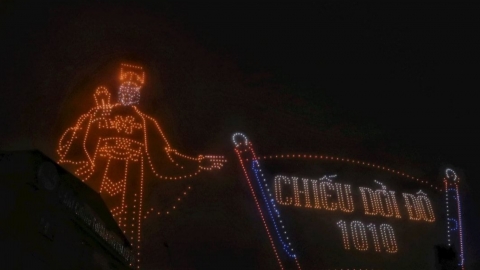The ancient Thang Long has gone through many ups and downs for nearly a thousand years, changing times to become the prosperous and cosmopolitan Hanoi of today. Many generations and elites from all directions have gathered to form associations and guilds. Since then, the names of the streets have been closely associated with the history of this Imperial City.
Having gone through countless wars, many times the people of Hanoi have left their yards and gardens behind because of foreign invasions. The old gate of the village has been closed and opened in times of turmoil, and may no longer be intact, but the banyan tree, the well in the communal house yard and the silhouette of the village gate are still deeply rooted in the subconscious of every person.

The image of the village gate is still deeply rooted in the subconscious of every person.
The process of urbanization has gradually reinforced the historical traces, changing the appearance, but somewhere in the memory, the image of the ancient Thang Long village still remains in the soul of many generations. Thang Long was once surrounded by villages and communes, but now it has become a district, a ward, only the village gates leading to the old paths and alleys remain.
According to the book "Old and New Hanoi Village Gates", author Vu Kiem Ninh, in 8 districts and 5 counties of Hanoi, collected images of 109 village gates and village cultural stories through folk tales, village festivals and words at village gates. In 12 districts and inner city of Hanoi, there are still village gates: Hoan Kiem district has 2 village gates, Ba Dinh district (4 village gates), Cau Giay district (9 village gates), Dong Anh district (22 village gates), Dong Da district (1 village gate), Gia Lam district (9 village gates), Hoang Mai district (7 village gates), Long Bien district (6 village gates), Soc Son district (2 village gates), Tay Ho district (10 village gates), Thanh Tri district (17 village gates), Thanh Xuan district (2 village gates), Tu Liem district (18 village gates).
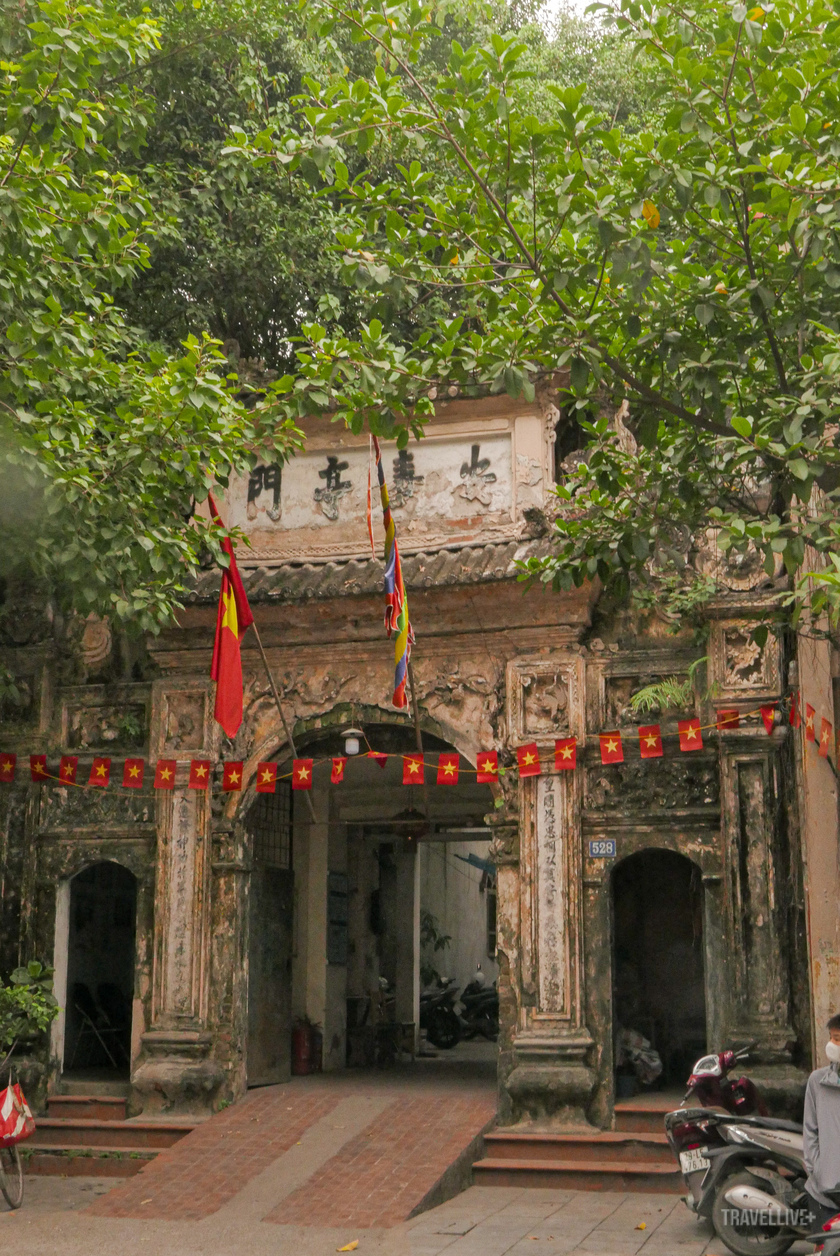
An Tho communal house gate
Village in the city
In the inner city, people often talk about Thuy Khue Street, famous for its name Village Gate Street, because this was formerly Ke Buoi Street, and until now, many traces of the old village are still preserved in the midst of modern city streets. This place belongs to Tay Ho district, a long street running parallel to the southern bank of West Lake. Having gone through many ups and downs and historical events, Thuy Khue, although nestled in the midst of modern life, still retains the flavor of the past.
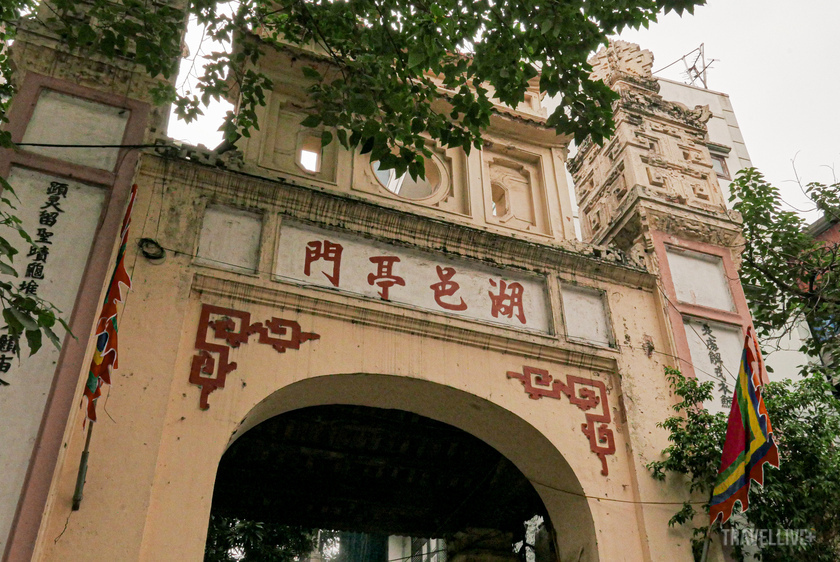
Ho Khau village gate
Villages in Thuy Khue are different from the appearance of people to the village gates. Each gate has its own size and appearance, difficult to blend in. The first gate along Thuy Khue street from Buoi slope down, intersecting with Buoi market intersection, is Yen Thai Village gate (or An Thai). An Thai village used to have many gates leading into the village. According to the people around the area, people named the gates with simple, easy-to-remember names: An Thai gate, Hau gate, Gieng gate, Xanh gate (Canh)... It is called Gieng gate because Yen Thai village well is clear all year round, and has been famous in folk songs far and wide:
"Yen Thai well is both clear and cool
Yen Thai road is paved with bricks and easy to walk.
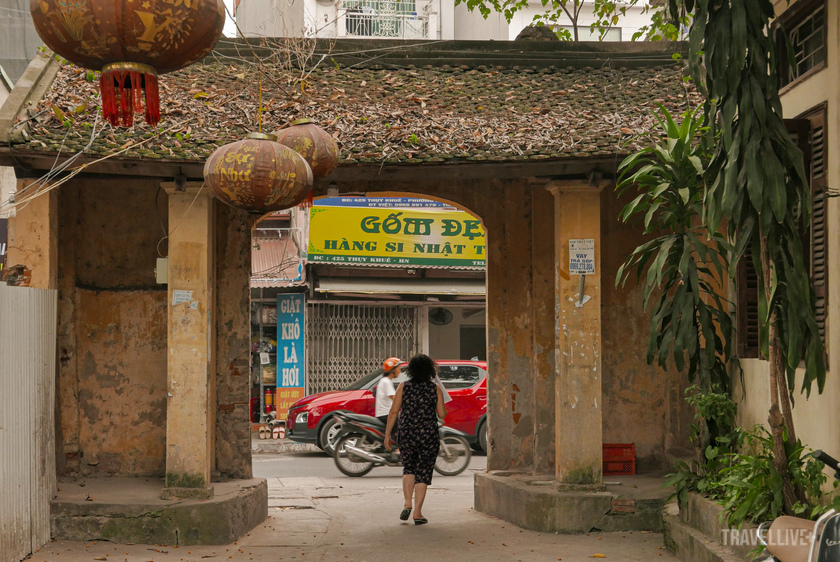
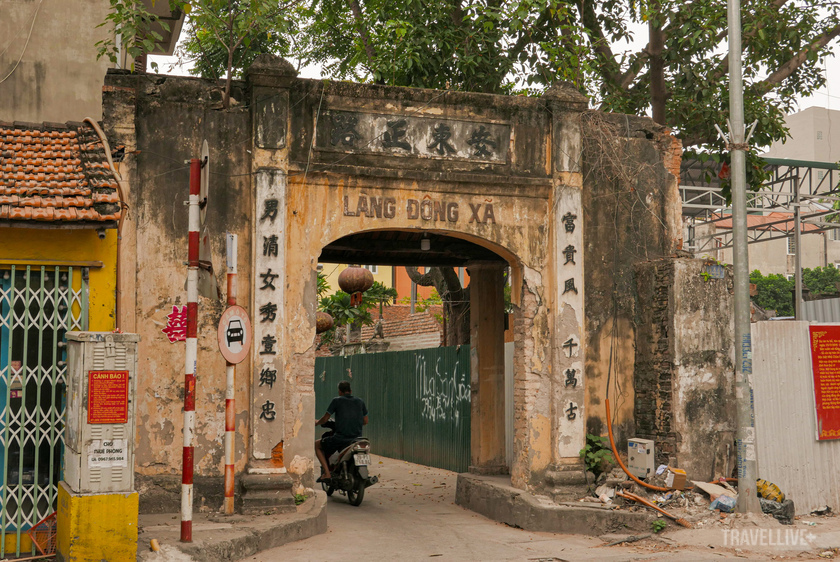
Dong Xa village gate
The village in Ke Buoi in the past was paved with blue stone, and according to the elders, no matter how heavy the rain, it would not get muddy, clean, majestic, and tidy like the elegant lifestyle of the people of Ke Buoi.
"The wind blows the bamboo branches
The bell of Tran Vu, the chicken of Tho Xuong
Misty smoke
The rhythm of Yen Thai pestle, the mirror of West Lake.

Ho Khau village gate
The rhythm of the pestle has been beating for thousands of years, but the craft of making do paper has disappeared, the ancient well has been buried, Yen Thai has entered folk songs as a reminder of a time as vast as the waves of West Lake. In the middle of a bustling urban area, Yen Thai is quiet with wind and mist, the village gate tilted with red bricks whispering stories of the past, it is rare in the heart of the Capital that there is still an ancient village many years old, with the typical alley structure of a Northern village.
The land and customs, whether near or far, all villages have the custom of preserving the village customs since its inception. The large inscription hanging in front of the village gate has the four words "My tuc kha phong" (Good customs are good) given by the Tu Duc Dynasty in the 19th year. Passing through the village gate, the outsider seems to mold himself into the old customs, to escape the noise, to leave the breath of the city behind the steps of the village gate.
The village in Thuy Khue is on the same year on an even number axis, although in the past, around the West Lake, there were a series of guilds and craft villages located next to each other, creating an elite and prosperous region with traditional crafts that are still famous forever. Following Yen Thai village, also on Thuy Khue street, is An Tho village. The village has 3 gates, An Tho communal house gate, Hau gate and Xanh gate. The people of An Tho, past and present, are still proud of the majestic communal house gate, which still retains its moss until now.
"Su Thuy's cycle of literary works
"The writing style of the city is very high."
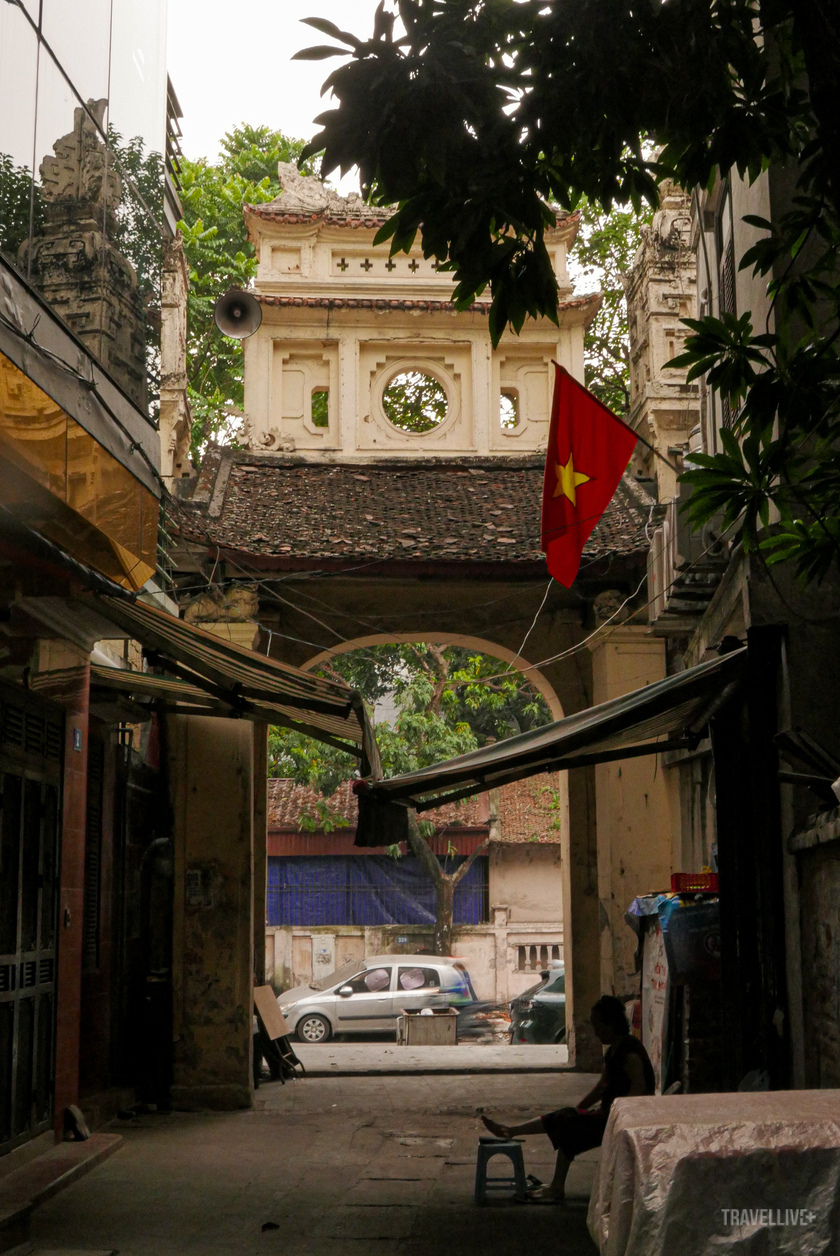
In the midst of the bustling capital with its whirlwind of urbanization, suddenly there are bells ringing, drums urging, and slow songs calling us home.
The ancient people of An Tho village, imbued with the vitality of Thang Long land, gave birth to many generations of mandarins and intellectuals for the country. After retiring, they returned home to retire and settle down here, so the name of the Hau gate came from there, "Hau" in the four glorious titles of Cong, Hau, Khanh, and Tuong.
The Green Gate is at the beginning of lane 514 Thuy Khue, also known as Canh Gate. In the past, the gate had the function of blocking the way for bandits to enter the village, so there was a guard post. The villagers based on the function of the rampart named it Canh Gate, later misread it as Green Gate.
Dong Xa village gate now leads to lane 444 Thuy Khue. According to the elders, in the past there were 5 steps up and down, but over time, to make it convenient for modern planning, it was demolished. Now there is only the gate that still retains its old appearance, with a couple of parallel sentences, and the large words "An Dong main road" welcoming people coming and going.

Green Gate (Watch)
People nowadays walk less, instead they use rolling vehicles, the Vietnamese village gates, which were originally made up of steps, now hardly retain the structures specifically for walking. Ho Khau village is the village with the most gates in Ke Buoi, with 3 large, imposing and sturdy gates, but unfortunately they have all been restored, so they no longer retain their old appearance, only the steps at the main gate remain intact instead of being paved flat, to retain some of the typical cultural marks.
The villagers remain, the village customs remain, the village spirit remains intact.
Praising the saying “My tuc kha phong” (Good customs are good) has carved into the hearts of every villager the ways of life, old customs and habits that have been recorded as standards. The Northern countryside has long been associated with the village gate. For generations, people have entrusted their joys and sorrows, their thoughts and desires to the village gate, as the song “The roof of the village communal house by the sea” has the line “Send here, here, the joys and sorrows of the Vietnamese people…”.
The village in the cultural capital, like many other villages in the North, has had many storms blowing through the bamboo fences for hundreds of years. The village gates have been destroyed and rebuilt, but the soul of the village and the villagers still seems to be hidden everywhere. The longevity of the village through the ups and downs seems to never be explained by the knowledge in school, but through the perspectives and sympathy that people experience, that core is eternal, because the village has order.

Green Gate (Watch)
The Vietnamese have the concept of "All things have a spirit", so the village gate becomes an inseparable part of the Vietnamese village entity, with the role of expressing aspirations and dreams, or representing the image of the villagers. The village gate, in addition to being a partition, separating inside and outside, is also a witness to history, witnessing the ups and downs of the times. The village gate has accompanied the Vietnamese people since the time of building villages and hamlets, until now, it has become the origin for people who have traveled far and wide to know the way back. The times are like that. When peace comes, when people no longer have to worry about today and tomorrow, they suddenly remember that although life is full, people still lack their souls.
City people are caught up in the whirlwind of the market all year round, and suddenly a vague nostalgia arises in their minds. That is when the voice of the countryside from deep within their minds calls them to return soon. Whether near or far, there is no one who does not come from the countryside. Whether poor or wealthy, everyone wants to have a homeland to return to.
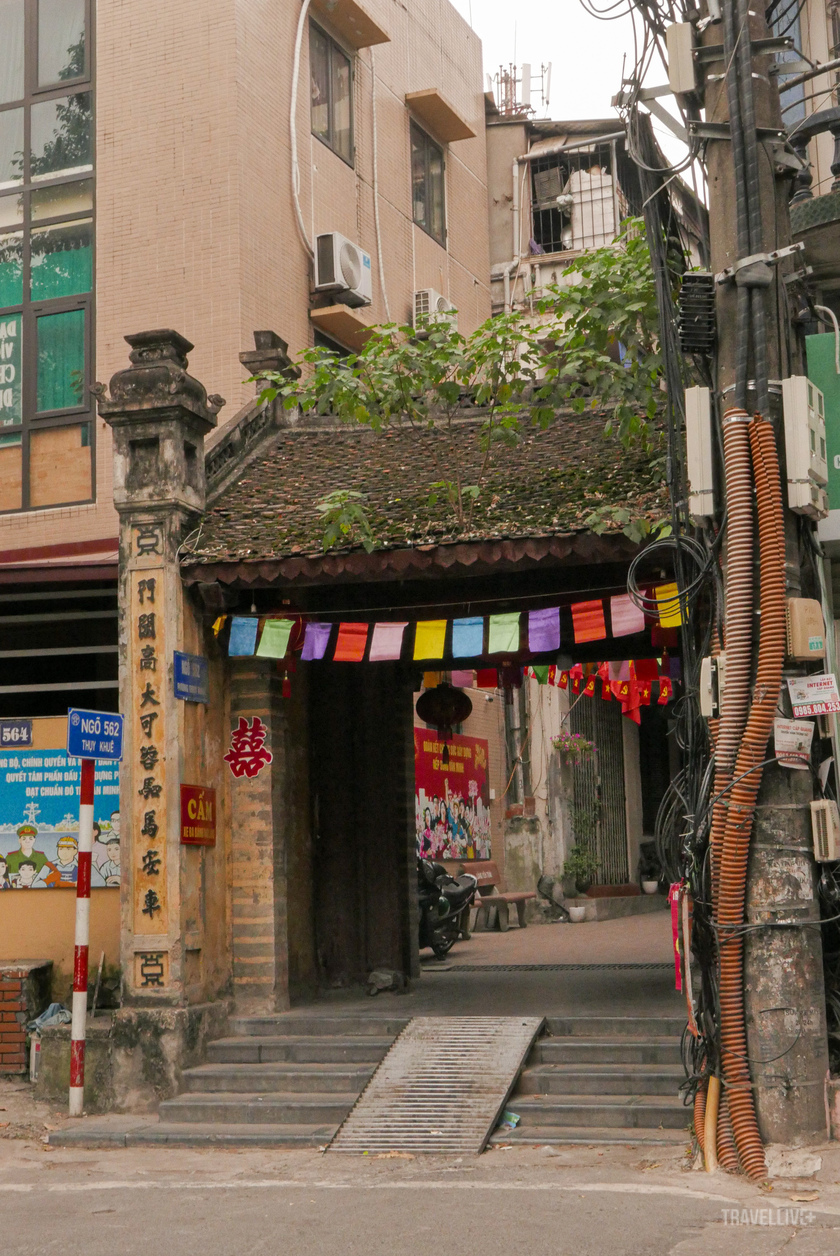
Yen Thai Village Gate (or An Thai)
The attachment between people and the countryside, like the attachment of the countryside to the soul of the village, is sometimes forgotten for a lifetime but sometimes suddenly appears. The story of restoration, like the work of preserving the core of the village, is not about luxurious repairs, but the important thing is to preserve intangible values. The villagers still exist, the village customs still exist, the village soul still remains intact.
In the midst of the bustling capital with the whirlwind of urbanization, suddenly there is the sound of bells ringing, drums urging, and a slow folk song calling us home. And then, after days of gathering with family for a hearty meal, everyone goes about their own business, returning to the hustle and bustle of the city, in our hearts still echoes a song of our homeland.
The village gate, after many storms and storms… is still the most tolerant place in the end, a stronghold for the past fires and smokes, and now continues to support the fatigue amidst the hustle and bustle of the city. Standing tall for many years, as if there is still a bit of faith in peace behind the steps, supporting our steps to overcome all the waves of life.







